Key Findings of the Analysis of the Proposed National Employment Strategy for the Period 2021-2026
As the public debate on the Proposed National Employment Strategy (Draft) winds down, we hereby provide the key findings of the NCEU Working Group for negotiating chapters 2 and 19 - Social Policy and Employment:
1. The proposed document is aimed primarily at employment market policy and not on employment policy. Excluding the employment and labour sectors, no other sectors are listed as responsible for strategy implementation. The Proposal fails to envisage the manner in which social dialogue obstacles are to be overcome. Measures to strengthen the capacities of social partners are not envisaged, nor are measures to advance the capacities of the Social and Economic Council (SEC).
2. Although the goals mention labour market inclusivity, decent work and quality employment, the proposed measures will not lead to the creation of quality jobs. Extremely important amenities that would remove obstacles to entering the labour market have been left out (e.g., developing childcare/elderly care services as support to women in the labour market). Measures to encourage social inclusion and reduce poverty are lacking. Considering employment policies in the context of sustainable development is completely missing in this document.
3. Despite the fact that the Proposal includes the European Commission's assessment i.e., "adequate financial and institutional resources for employment and social policy are lacking", planned allocations for active employment measures (ALMPs) are projected at 0.2% of the GDP in 2026, while the target value in the previous strategy was 0.5% of the GDP in 2020. Such modest allocations will keep Serbia dwindling behind Europe with the lowest coverage of ALMP measures. Let us remember that, in Europe: in 2018, 5.1 out of 100 unemployed people were included in ALMP measures in Serbia, while in the EU, Romania had the smallest coverage (5.3), and Belgium the largest (76.5). Coverage of the unemployed by ALMP measures dropped to 4.7 in 2019.
4. The proposed strategy is a step backwards in comparison to the previous strategy. While the previous strategy defined goals for improving the positions of 10 hard-to-employ groups (women, youths, people with disabilities, Roma, returnees under readmission agreements, rural population, internally displaced persons and refugees, beneficiaries of social welfare, unskilled and low-skilled workers, redundant employees) the new proposed strategy envisages measures for merely four groups (social welfare beneficiaries, women, youths and people with disabilities). Migrants, as a new vulnerable group, are not mentioned in the proposed strategy. The fact that the Roma population has been completely ignored as the most vulnerable group on the labour market, is alarming. World Bank research has been ignored, which states that by 2030, up to as many as 30% of new entrants to the labour market will be from marginalised and vulnerable groups, such as the Roma.
5. And finally, the practice of submitting calls for public debate during the holidays and leaving extremely short deadlines has been repeated this time, as well. We feel that this is not the way to responsibly and transparently analyse such an important strategic document, nor have all resources of NCEU members been used in its drafting.
6. The proposed strategy fails to include a proposed action plan for its implementation, which, as a rule, is adopted at the same time as the public policy document. We have to ask then, when and how will public debate on the proposed action plan be held?
7. Ministry of Labour, Employment, Veteran and Social Affairs
In the name of the NCEU Working Group for chapters 2 and 19
Working Group Coordinator - Center for Democracy Foundation
PUBLICATIONS
 Manual “The Path to Employment: Get to Know Your Rights and Opportunities”
Manual “The Path to Employment: Get to Know Your Rights and Opportunities”
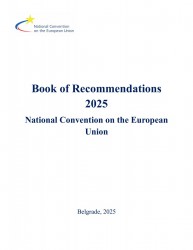 NCEU Book of Recommendations 2025
NCEU Book of Recommendations 2025
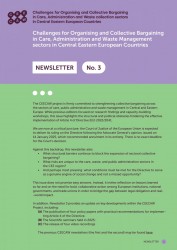 Challenges for Organising and Collective Bargaining in Care, Administration and Waste collection sectors in Central Eastern European Countries
Challenges for Organising and Collective Bargaining in Care, Administration and Waste collection sectors in Central Eastern European Countries
 Public Policy Proposals – Collective Bargaining (CEECAW)
Public Policy Proposals – Collective Bargaining (CEECAW)
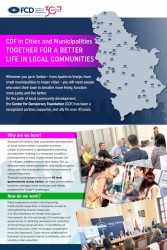 CDF in Cities and Municipalities: Together for a Better Life in Local Communities
CDF in Cities and Municipalities: Together for a Better Life in Local Communities
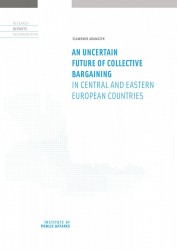 Comparative reports on collective bargaining - CEECAW
Comparative reports on collective bargaining - CEECAW
 POLITEIA – Regional School for Youth Participation 2025 (leaflet)
POLITEIA – Regional School for Youth Participation 2025 (leaflet)
 Report on the State of Labour Rights in the Republic of Serbia in 2024
Report on the State of Labour Rights in the Republic of Serbia in 2024
 Unlocking Collective Bargaining Power in Three Sectors: A Call to Action
Unlocking Collective Bargaining Power in Three Sectors: A Call to Action
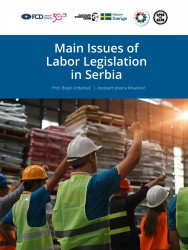 Main Issues of Labor Legislation in Serbia
Main Issues of Labor Legislation in Serbia
 New Monitoring Report by the “SDGs for All” Platform: Is the End Goal in Sight?
New Monitoring Report by the “SDGs for All” Platform: Is the End Goal in Sight?
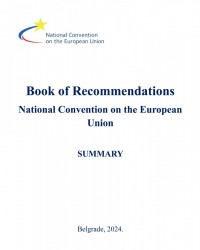 NCEU Book of Recommendations 2024 (Summary)
NCEU Book of Recommendations 2024 (Summary)
 National reports on collective bargaining in Serbia - CEECAW
National reports on collective bargaining in Serbia - CEECAW
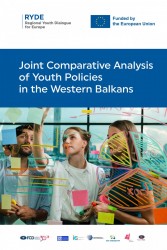 The Comparative Analysis of Youth Policies in the Western Balkans (WB)
The Comparative Analysis of Youth Policies in the Western Balkans (WB)
 Unlocking Collective Bargaining Power in Three Sectors: A Call to Action
Unlocking Collective Bargaining Power in Three Sectors: A Call to Action
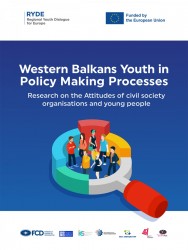 Western Balkans Youth in Policy Making Processes
Western Balkans Youth in Policy Making Processes
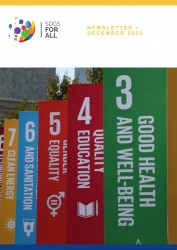 SDGs for All Platform newsletter (December 2023)
SDGs for All Platform newsletter (December 2023)
 Analysis: Poverty Reduction Through Sustainable Agriculture in Serbia (with Summary)
Analysis: Poverty Reduction Through Sustainable Agriculture in Serbia (with Summary)

















































